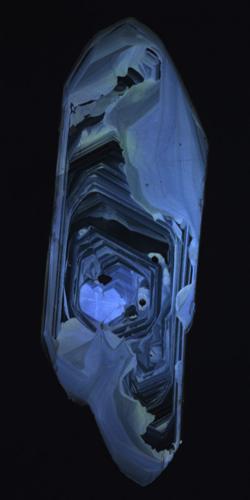What was the Earth like early in its history? Was the planet covered by a magma ocean, or was it more hospitable, with continents, oceans and a life-sustaining atmosphere?
Answering this question has been difficult, because the oldest rocks found on Earth are about 4 billion years old, but we know from studies of meteorites and the moon that the planet formed about 4.6 billion years ago.
Fortunately, geologists are beginning to learn about this mysterious phase in early Earth history, thanks to the Jack Hills sandstone in western Australia, which contains zircon crystals that formed more than 4 billion years ago.
But our story begins much more recently, in the fall of 2014, when a group of honors students in the introductory geology course at the University of Arizona signed up for a project that involved dating minerals.
They discussed potential projects: How old are granite bodies in the Catalina Mountains? How old is the Grand Canyon? When was Sonorasaurus (our famous local dinosaur) alive? In the end, the students decided to tackle one of the grand challenges in Earth science: When did the Earth first become conducive for life?
The first step in addressing this question was to acquire some Jack Hills sandstone from western Australia, which was generously provided by professor Mark Harrison at UCLA.
Step two was to extract mineral grains from the sandstone that could be examined and dated. The ideal mineral for this is zircon, because it is highly durable. It resists melting, abrasion or dissolving.
Jewelers will tell you that “zircons are forever.” And they contain enough uranium that, because of the steady decay of uranium to lead over time, the age of the crystal can be determined.
Step three was to determine the ages of several hundred zircon crystals using the mass spectrometers at the Arizona LaserChron Center.
Imagine the excitement in the mass spectrometer lab late at night, given that students are in class during the day, when one crystal after another yielded ages greater than 4 billion years, with some as old as 4.2 billion to 4.3 billion years!
Like tiny (microscopic, actually) needles in a haystack, these crystals provide the only record of what our planet was like for the first 500 million years.
But far better than needles, zircon crystals are time capsules that also contain a lot of additional information. For example, the high silicon and oxygen content of zircon indicates that continents must have existed at the time of crystallization.
Sorry, if you like the idea of a magma ocean, that chapter in Earth history must have closed prior to 4.3 billion years ago.
And the oxygen isotope composition of these oldest zircon grains indicates that a hydrosphere (e.g., oceans) and an atmosphere were present at the time of crystallization. So it appears that conditions on Earth were conducive to life soon after the planet formed.
Who would have guessed that undergraduate students conducting measurements on zircon crystals too small to see with the naked eye would be able to help answer planet-size questions?





